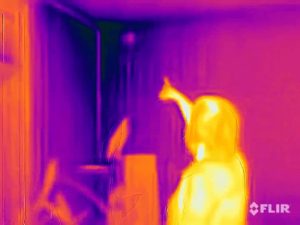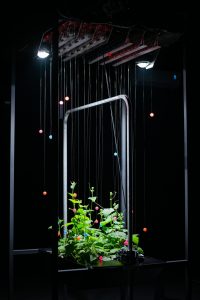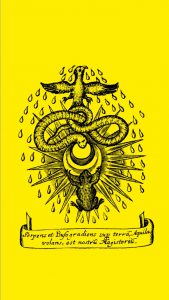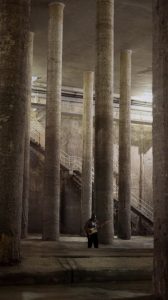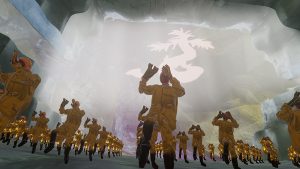The largest part of the pharmaceuticals and chemicals we take go through our bodies and eventually end up in waste water. As water and waste treatment plants haven’t been designed to filter them, the content of our medicine cabinets are eventually passed into the water supply. In London, tap water comes from surface water which implies that traces of our medicine can end up in our drinking water. This results in local differences in tap water, based on the food and drugs we ingest.
Tuur van Balen, one of the graduates of Design Interactions at the RCA, decided to explore this issue in a project which imho had the perfect balance between speculation and solid anchorage into reality.
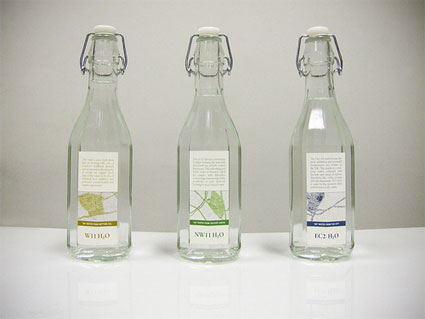
The way people live and behave in each zone of London can be reflected in the quality of the tap water. Tap water in London Notting Hill very probably benefits from the high density of organic shops found in the area. Tap water in the city of London is presumably enhanced with all kinds of stimulants, from caffeine-rich drinks to cocaine. Golders Green which houses an important Jewish community can be expected to ‘produce’ a very fertile water due to the low concentration of people taking anti-conception pills.
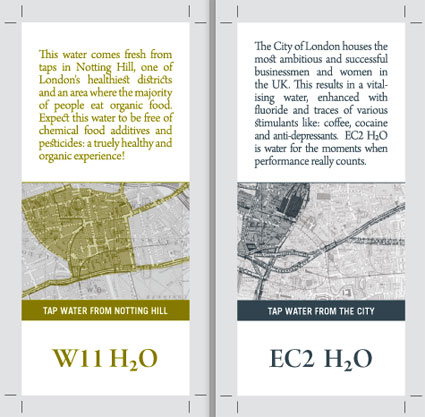
Back in January, at the opening of the department work in progress show, Tuur presented My City = My Body, the first chapter of this research into future biological interactions with the city and more precisely into how the increasing understanding of our DNA and the rise of bio-technologies will change the way we interact with each other and our urban environment. He offered tap water to the visitors of the show and asked them to donate a urine sample along with their postcode. The samples, their biological information and postcodes were then added to a map of London which reveals potential local city-body ecologies or biotopes.
The mapping of tap water creates separate territories within the city. Could these areas be the biological counterpart of gated communities?
The next step is a website which helps London inhabitants describe, speculate on, map and share what they think are the unique characteristics of their tap water. The map thus created reveals potential local city-body ecologies, or biotopes. The system will also generate a custom-made label which you can download if you want to sell your own tap water.
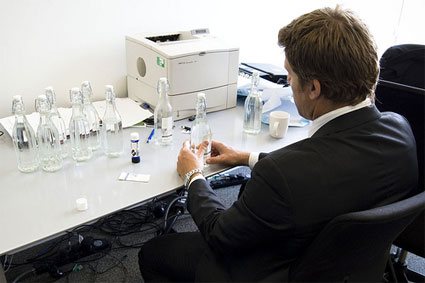 Filling the bottles in the City…
Filling the bottles in the City…
That’s what the designer did. He went to the hip and organic-addicts frequented Broadway market in Hackney to set up a stall, offer people to “buy” bottles of tap waters, branded with the London area they came from and engage in a discussion about the possibility of new urban biotopes.
selling tap water on Broadway Market from Tuur Van Balen on Vimeo.
You can find various websites which details the quality of various tap waters. But most of the systems employed to analyze water do not check for say, anti-depressant substances or cocaine. What if biotechnology could provide us with cheap detectors?
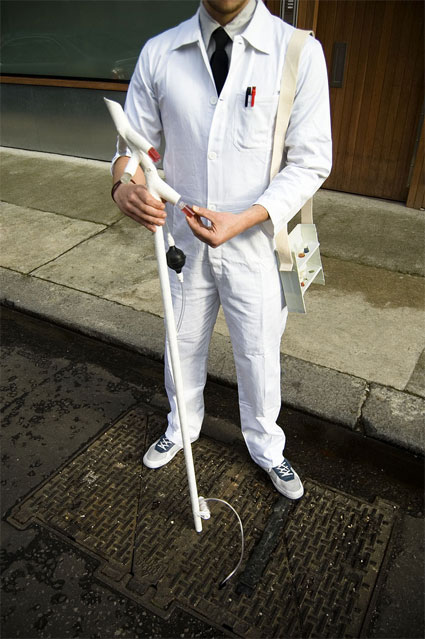
With the help of bioengineer James Chappell, Imperial College, Tuur developed the concept for a Urban Biogeography tool. The instrument would enable anyone to study the distribution of urban biodiversity over space and time by monitoring sewage. With the tool, a tiny amount of sewage can be pumped up and scaned for different pharmaceutical and chemical traces, without having to lift a manhole cover.
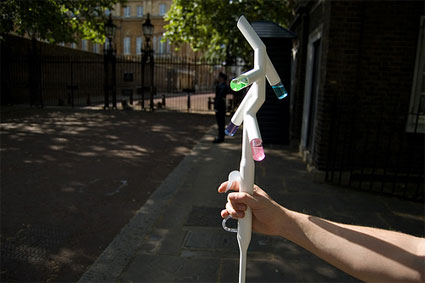
Using synthetic biology and in particular the biobricks tools, bacteria are programmed to become cheap biosensors. The bacteria-sensors, housed in the small transparent compartments, change colour when oestrogen, antibiotics, Viagra or Prozac are detected in the water. Since synthetic biology is both open source and modular, this instrument can be redesigned to detect other chemicals by any Urban Biogeographer, even amateurs as the technology is becoming increasingly accessible. The set of data thus obtained can be used to influence healthcare or property prices in the area, that of course would be the ideal scenario…
All images courtesy of Tuur van Balen.
Related: 24c3: Programming DNA – A 2-bit language for engineering biology, Designer Microbes.

